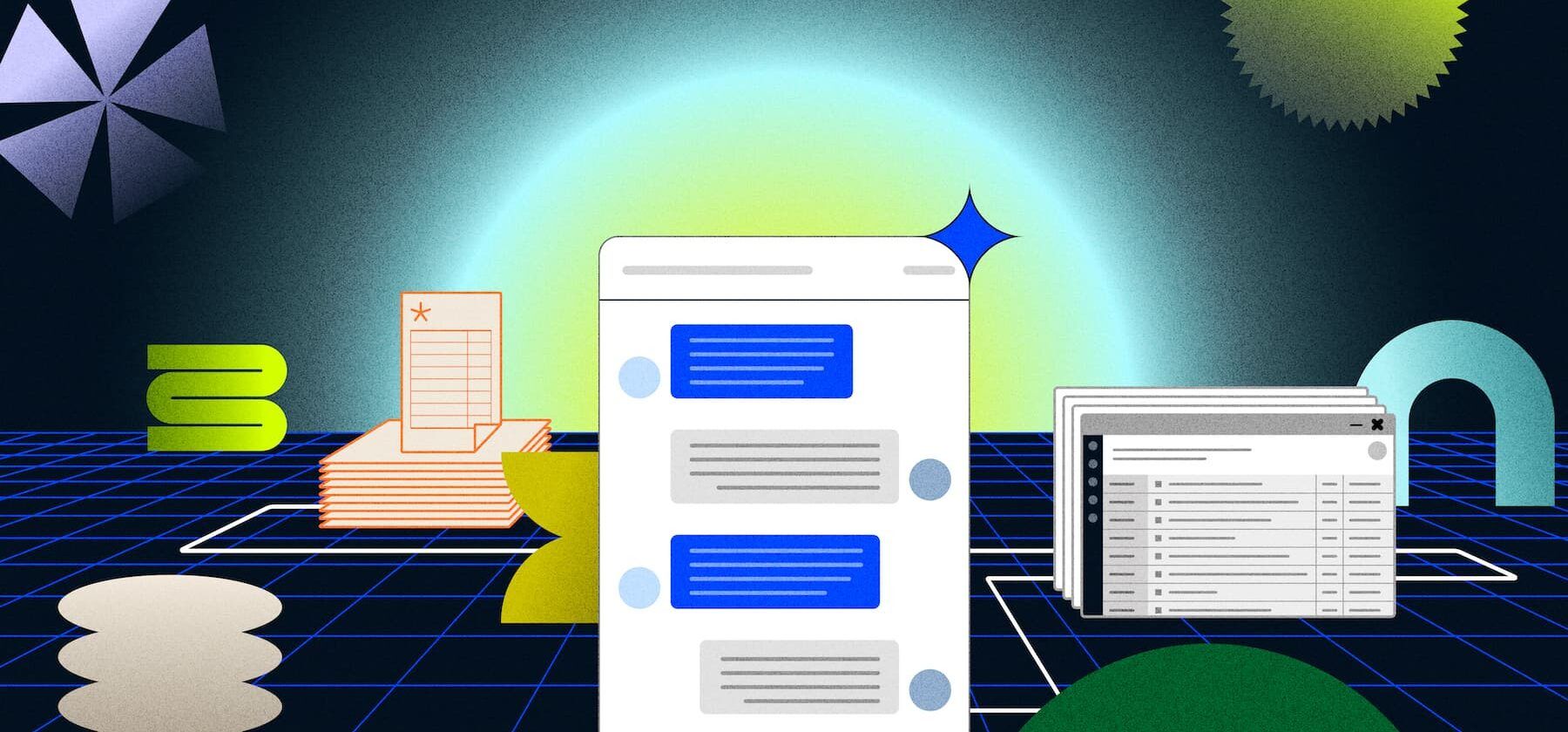
Making tickets personal: How ticketing systems are evolving for next-gen support
Most customer service tools were built for a bygone era which no longer meet the needs of today’s customer. Customer service software is outdated, fragmented, slow, and prevents support teams from delivering exceptional service.
We’re changing that. Intercom is a complete human and AI-powered customer service platform that delivers faster, more personalized support at scale.
In the past year, 83% of support teams have seen customer expectations increase. Meeting those expectations means reimagining the way things have always been done, and reshaping familiar support processes to suit a fast-paced, online-first world.
That includes integral tools like ticketing systems. Tickets have been a core part of customer service for decades – and for good reason. But when it comes to online businesses, ticketing systems are mostly impersonal, unresponsive, and utilitarian.
What are tickets and how are they evolving?
Tickets are a way of keeping track of customer requests, and the actions taken in response, within a ticketing system. The system labels the interaction with an identifying number, issues that ticket ID to the customer, and keeps track of the ticket as it works its way through the behind-the-scenes resolution process, which might require the involvement of multiple teammates.
See? Even the definition of a ticket seems a little cold and impersonal. And until now, support tools have taken one approach to tickets with very little variation, making them more complicated and unintuitive than they need to be.
The term “ticket” comes from the physical world where, for example, you take your coat to a cloakroom or the dry cleaners, and chat to an attendant who takes the item and attaches a ticket so they can identify it among other peoples’ clothes. You receive a counterfoil of the ticket so you can eventually collect the right coat.
When tickets became digital, delivered through email-based help desks, that personal experience took a backward step and the opportunity to deliver a better customer experience was missed:
- Email and web ticketing eliminated the personal touch you get from the attendant or shopkeeper.
- Web ticketing systems, while addressing the problem at a fundamental level, are neither smart nor connected, and do nothing to make the customer experience better.
Treating your customer as a number in a queue is now an outdated way of providing support. At Intercom, we’ve always believed that support should be conversational. Even the largest online business can make a customer feel special if it takes the right approach with the right tools.
Creating a seamless ticketing experience for your customers
As our VP of Customer Support, Declan Ivory, said in our Customer Service Trends Report 2023, “Support leaders are looking for strategic ways to improve the customer experience without sacrificing the employee experience, which may have already been affected by things like low morale, inefficient workflows, and disconnected technology.”
Modern customer service technology is an integral part of any customer service strategy, as well as customer – and team – satisfaction. Over the course of many conversations, our customers have told us what they’re looking for in a ticketing system – and how we could improve ours to meet the needs of a modern support team and its customers.
In the end, it comes down to three simple requirements:
1. I need a way for my customers to lodge a request and to keep track of its progress.
It sounds simple, and yet customers have told us that some support tools make it difficult to escalate complex queries and requests within a customer conversation, manage customer expectations and provide updates, or collect information and important context from a ticket.
Our answer: Customer tickets
Keep your customer at the center of every process by easily creating a ticket within any conversation, and continuing the conversation seamlessly. Customers can see that the ticket has been created, keep up with all updates, receive automatic progress notifications via email, and revisit the “tickets” section of the Messenger whenever they want to check in on their ticket’s progress.
If your customer would rather not start a conversation, they have the option to submit a ticket right there in the Messenger or in the product itself.
2. I need my support team to be able to collaborate with other teams to resolve customer queries.
This is an essential element of any ticketing system, and yet it can so often be made difficult by disconnected updates, lack of access to the same tools, and communication happening across a range of platforms, resulting in lost context and skewed reporting.
Our answer: Back-office tickets
Seamlessly collaborate with other teams in the business to resolve customer requests. With back-office tickets, you and other teams can add internal, private notes – but always access conversations, context, and customer data on the front end. Not only that, but our “Intercom lite” seats means not every team has to work through Intercom, teams can jump in and out as needed, and our ticketing system can integrate with a wide range of the most commonly used tools, including Jira and Slack.
3. I need a way to keep track of wider issues raised across multiple tickets, e.g. a feature bug or system outage, and share updates and resolutions with multiple customers at once.
Unfortunately, issues impacting multiple customers are inevitable, and when they happen, it can be difficult to measure their overall impact, keep customers updated across the board, and communicate resolutions at scale.
Our answer: Tracker tickets
Now you can streamline problems impacting many users, minimizing repetitive work as your support reps flag the issue, update customers, and communicate a resolution in one go. Link all related conversations to a tracker ticket to create a single source of truth for your team, work with internal teams in the background, and broadcast updates to customers.
Creating a seamless ticketing experience for your team
For a truly seamless ticketing experience, integration with your team’s existing processes is non-negotiable. Our customers’ feedback gave us invaluable insights into small features that can make a major difference to your team’s efficiency and effectiveness.
- Tickets should integrate with your existing workflows: You can use our no-code builder to automate actions around tickets, e.g. assigning certain tickets to a specific team.
- Tickets should fit with your existing reporting processes: Measure your team’s ticket-handling prowess in the same place you measure everything else.
- Tickets should integrate with your most-used tools: Ensure maximum cross-team collaboration by integrating Tickets with the tools other teams rely on.
- Tickets should be connected to your existing support platform: Avoid tool-switching, process updates, and disconnected resolutions with a ticketing system that’s part of a wider interconnected platform.
Given how rapidly customer service is changing, it can be hard to imagine what the future will look like. What we are certain of is that the future of customer service will combine human knowledge and empathy with AI speed and scale. It’s time to shake the belief that tickets have to be cold, functional, and complex to do the job they’re supposed to do – there’s a better way.
Find out more about Intercom’s support ticketing system here.







